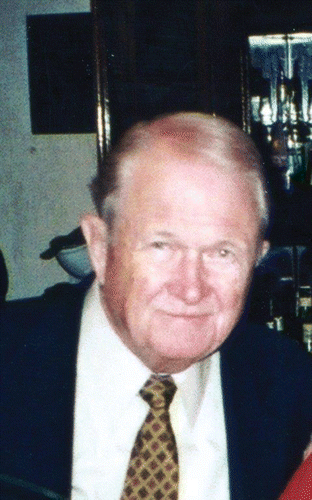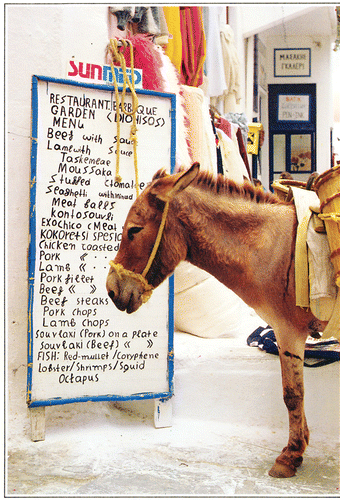Paul Newberne died on March 22, 2015 at the age of 94. Paul had a long and illustrious career focused on issues of great significance in the field of Nutrition and Cancer. He was born on November 4, 1920 on a cotton and peanut farm in southern Georgia. After graduating from high school, Paul started his college education at a local community college, and later entered the University of Georgia, where he completed 2 years prior to entering the U. S. Navy. He served as a Naval aviator during World War II, from 1942 until 1945. After serving as a Navy pilot, he entered the College of Veterinary Medicine at Auburn University in Alabama, where he received a Doctor of Veterinary Medicine (DVM) degree in 1950. He went on to earn a Master of Science (MSc) degree in Veterinary Pathology in 1951, and then a PhD degree (in Nutritional Biochemistry with a minor in Human Pathology) from Missouri University in Columbia, Missouri in 1958. Paul held the positions of Instructor in Veterinary Pathology at Auburn University, and then in Veterinary Microbiology and Agricultural Chemistry at Missouri University, and completed a post-doctoral fellowship at the National Institute of Neurological Disease and Blindness, National Institutes of Health in Bethesda, Maryland. Paul returned to Auburn University as an Animal Pathologist and Professor, where he remained until 1962, when he accepted an appointment as an Associate Professor in Nutritional Pathology in the Department of Nutrition and Food Science at the Massachusetts Institute of Technology (MIT) in Cambridge, Massachusetts. In 1965, he became a Professor in Nutritional Pathology in the Department of Applied Biological Sciences at MIT. In 1984, he became a Professor Emeritus at MIT, a title which he held until he died.
Paul had a very long list of professional affiliations and memberships, which, to name only a few include the following: American Institute of Nutrition, American Society Nutritional Sciences, American College of Veterinary Medicine Association, Society of Toxicology, and the American Association of Pathologists. He was also a member of the editorial boards of numerous cancer, toxicology, pathology, and nutrition journals, which included Cancer Research, the Journal of Nutrition, and the Journal of Nutritional Biochemistry, among many others. He received numerous honors and awards, a few of which included a National Cancer Institute Research Career Award, Honorary Member, Society of Toxicologic Pathologists, Gold Medal, American Veterinary Medical Association, and a Gold Medal, Princess Chulabhorn Research Institute, Bangkok, for “Initiating the Science of Toxicology and Toxicology Research into the curriculum of Higher Education in Thailand.”
Paul's research interests were focused primarily on nutrition and cancer, pathology and biochemistry of nutritional (liver) diseases, food safety and toxicology, and food-borne diseases. Paul's early interest in choline deficiency-induced fatty liver and cirrhosis was further developed after his move to MIT when he and colleagues began their studies of the food-borne hepatic carcinogen, aflatoxin. Adrianne Rogers joined his lab, and together they published a series of studies focused on the interactions between diet and aflatoxin carcinogenesis and, later, on the role of diet on chemical carcinogenesis in colon and breast cancer models. In all of these diverse areas of research, Paul was a leader and his activities included consultancies to several branches of the National Institutes of Health, including the National Institute of Environmental Health Sciences, the National Cancer Institute, the National Heart and Lung Institute, the Nutrition Study Section and the Animal Resources Study Section (and Advisory Board), and several National Academy of Sciences and National Research Council committees. Paul also served on numerous committees, including those of the World Health Organization (on Evaluation of Mycotoxins, Pesticides, the Joint Expert Committee on Food Additives, and Pathology of Nutritional Diseases) and served as an advisor to the Armed Forces Institute of Pathology, the Food and Drug Administration (FDA), the Environmental Protection Agency (EPA), the American Cancer Society, and the Royal Thai Government.
Paul actively participated in the teaching programs at all of the institutions in which he held faculty positions and he advised more than 150 students through the years; these students included more than 50 PhD students. Throughout his long research career, Paul mentored, encouraged, and supported his female students, colleagues and laboratory technicians with a level of enthusiasm and respect that was far from universal at that time. Several of Paul's students were international, and he formed life-long friendships with many of these students. He had particularly strong ties to the Thai Royal Family (which included friendships with her Royal Highness Princess Ubol Ratana, who was an MIT student, and Princess Chulabhorn Mahidol). Paul was a science advisor to the Royal Family of Thailand, where he worked in the area of food nutrition and purity to improve the quality of life for the people of Thailand. Paul's Thai connections extended to other professional colleagues as well. When I visited Thailand and spoke at the Chulabhorn Research Institute, I was treated like a Royal Thai visitor.
Paul travelled extensively, with visits to over 70 countries in his career. He often travelled with his wife, Lillian, better known as Shanghai. In their wide travels around the world, Paul and Shanghai visited his many international students, and Paul and Shanghai frequently entertained them and their families in their home. He was a talented raconteur and, especially in company with his brother, Jim, recounted amazing tales of their experiences as Navy pilots.
In his curriculum vitae, Paul listed well over 300 refereed journal publications, and over 80 book chapters or edited books. He was a frequent contributor and reviewer of scholarly articles in Nutrition and Cancer. I was a co-author with Paul on numerous publications related to the protease inhibitor suppression of carcinogenesis, many of which were published in Nutrition and Cancer over the past several decades. Paul's help in the establishment of dietary protease inhibitors as cancer preventive agents was important to our own research program, and his help continued in the various aspects of gaining approval from the FDA for relatively large-scale and long-duration human trials of the cancer preventive dietary protease inhibitor known as the Bowman-Birk inhibitor.
I received amusing postcards from Paul from all over the world during our friendship lasting many decades. An example of just one of these amusing postcards (from Athens, Greece) is shown in , indicating Paul's ability to find amusement in subjects related to his scholarly interests in animals and nutrition. He had a wonderful sense of humor and had what has been called “a permanent smile,” according to Felix A. de la Iglesia, MD, who wrote the editorial for Paul as he became an Honorary Member of the Society of Toxicologic Pathologists in 1988. That smile, and the wonderful personality that went with it, led to a lasting collaborative relationship with me, as well as with many others who were fortunate enough to have Paul as a friend.


